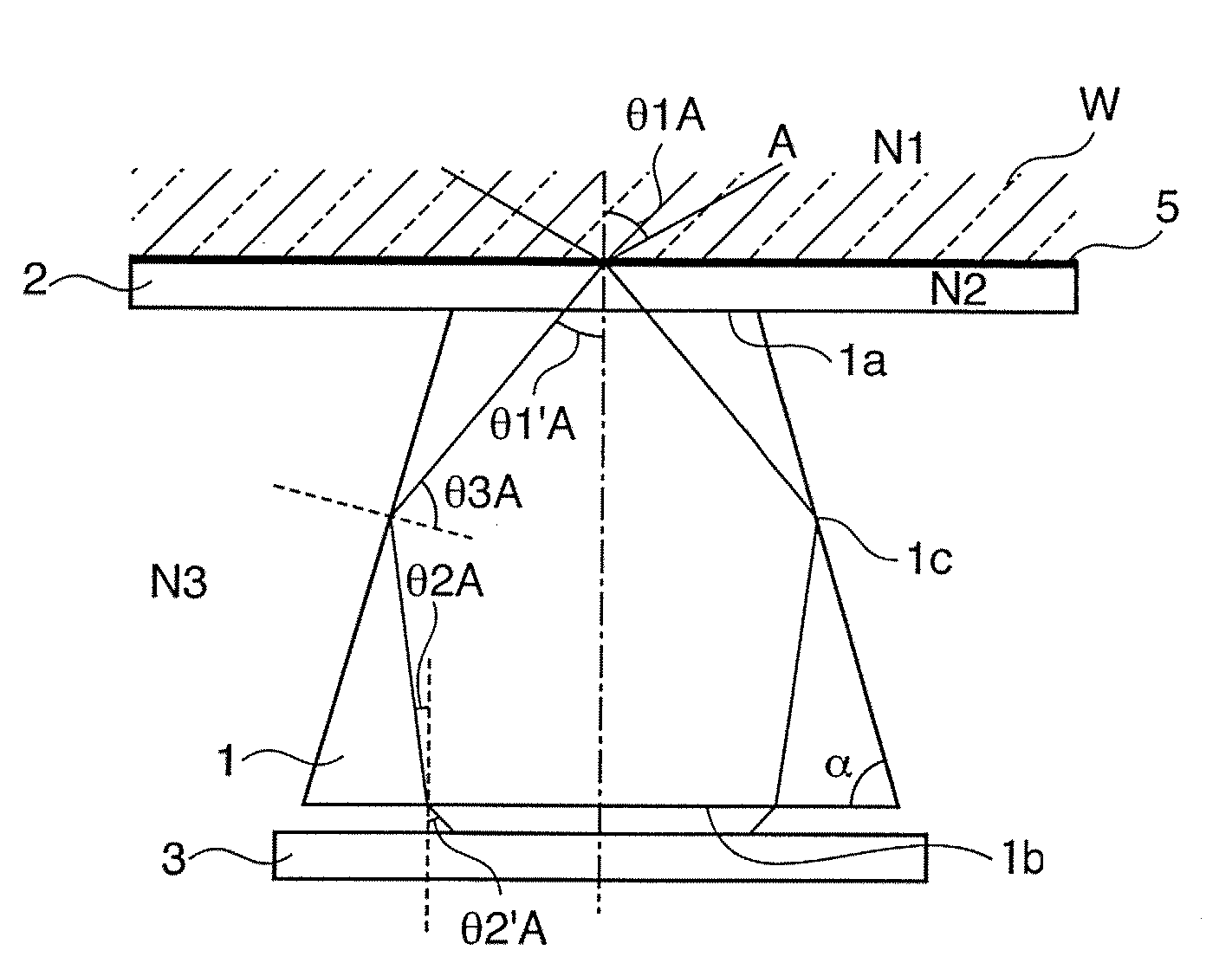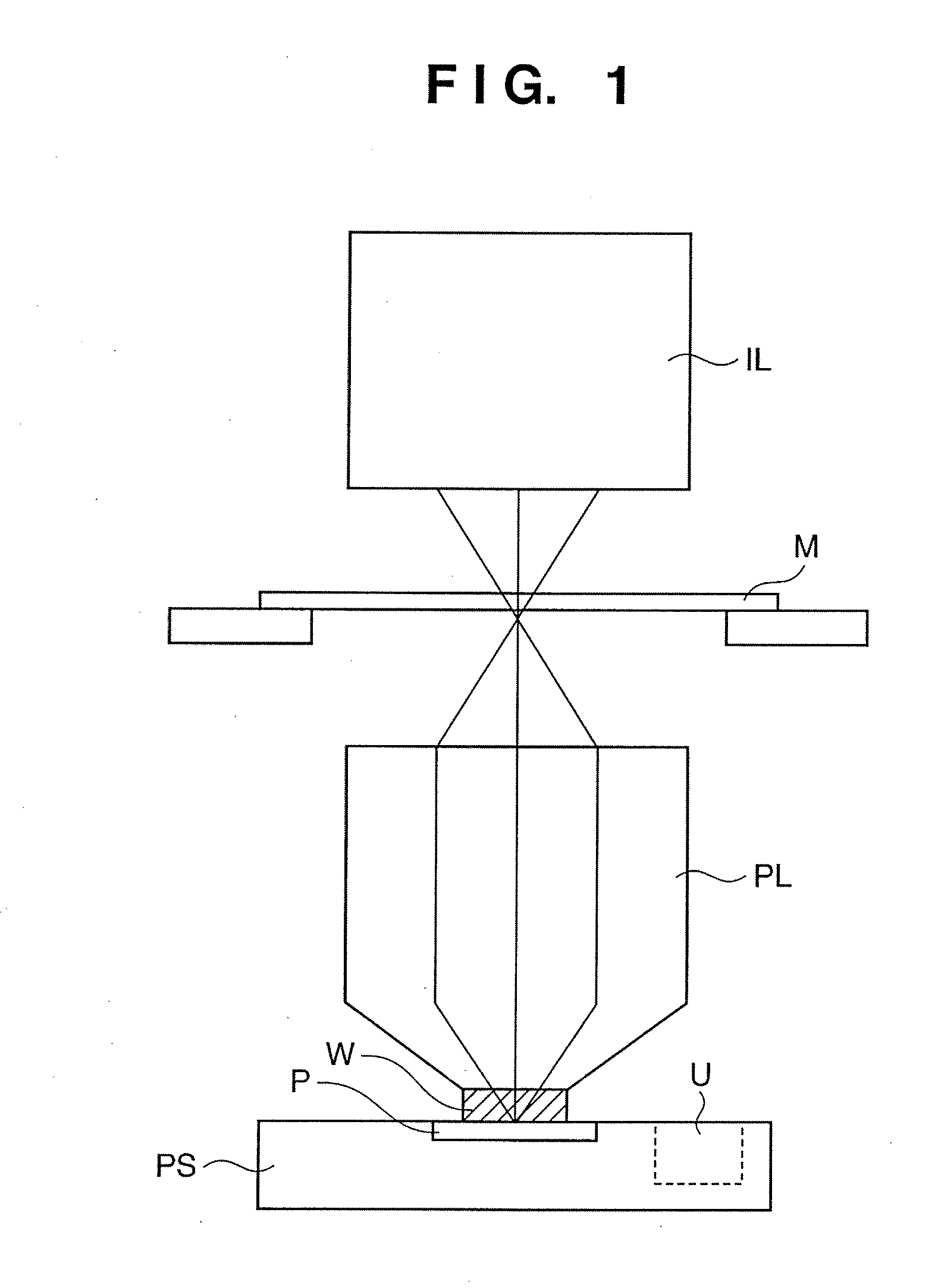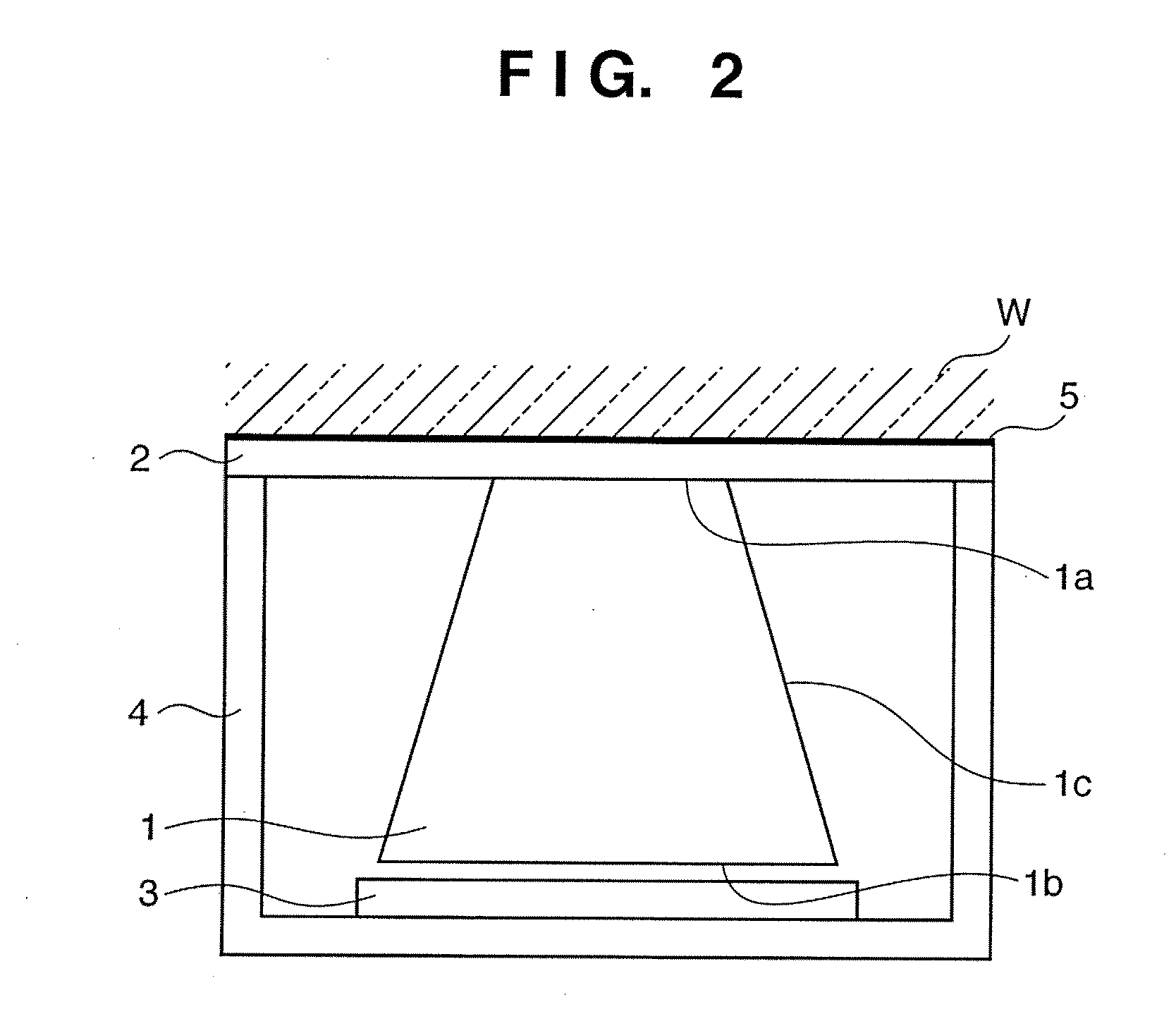Exposure apparatus and device fabrication method
a technology of exposure apparatus and fabrication method, which is applied in the direction of photomechanical apparatus, printing, instruments, etc., can solve the problems of increasing the number of lenses, and prone to humidity of the photodiode, so as to increase the na of exposure light
- Summary
- Abstract
- Description
- Claims
- Application Information
AI Technical Summary
Benefits of technology
Problems solved by technology
Method used
Image
Examples
Embodiment Construction
[0026]An embodiment of the present invention will be described in detail below with reference to the accompanying drawings.
[0027]FIG. 1 is a schematic view showing an embodiment using an immersion exposure apparatus. The immersion exposure apparatus according to this embodiment includes an illumination optical system IL for guiding a light beam emitted by a light source to a mask (original) M, and a projection optical system PL for projecting the pattern image of the mask M onto a substrate P coated with a photosensitive material. The immersion exposure apparatus according to this embodiment achieves an increase in NA by filling the space between the lower end surface of the projection optical system PL and the surface of the substrate P with a liquid (immersion material) W and performing exposure. A light quantity sensor U is accommodated in a substrate stage PS to be flush with the substrate P. The light quantity sensor U is a sensor for detecting the light emerging from the proje...
PUM
| Property | Measurement | Unit |
|---|---|---|
| angle | aaaaa | aaaaa |
| refractive index | aaaaa | aaaaa |
| incident angle | aaaaa | aaaaa |
Abstract
Description
Claims
Application Information
 Login to View More
Login to View More - R&D
- Intellectual Property
- Life Sciences
- Materials
- Tech Scout
- Unparalleled Data Quality
- Higher Quality Content
- 60% Fewer Hallucinations
Browse by: Latest US Patents, China's latest patents, Technical Efficacy Thesaurus, Application Domain, Technology Topic, Popular Technical Reports.
© 2025 PatSnap. All rights reserved.Legal|Privacy policy|Modern Slavery Act Transparency Statement|Sitemap|About US| Contact US: help@patsnap.com



